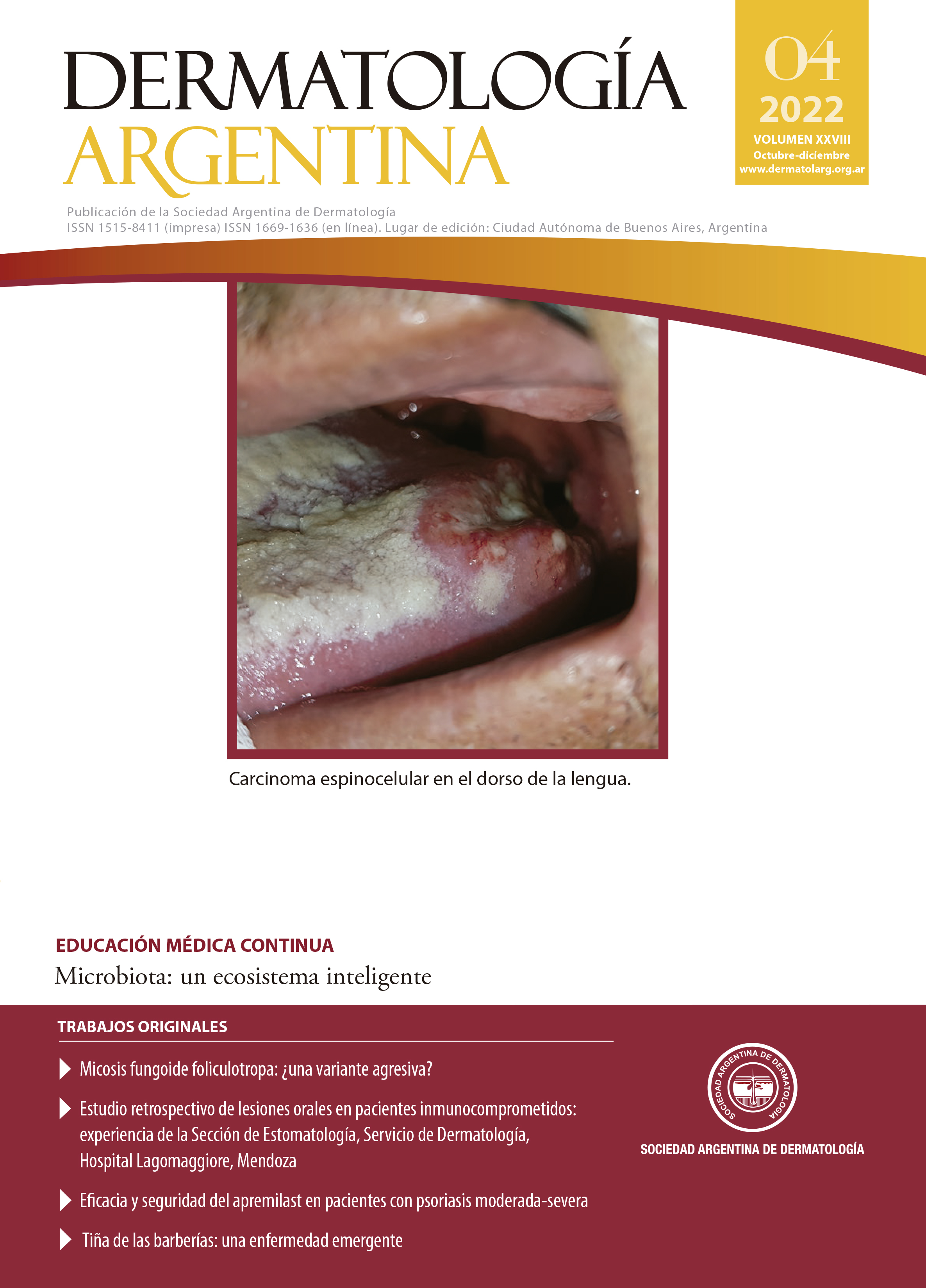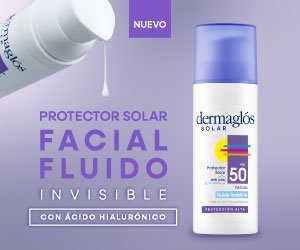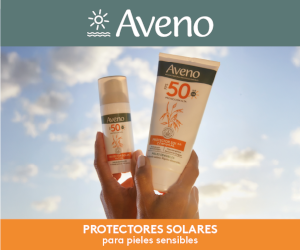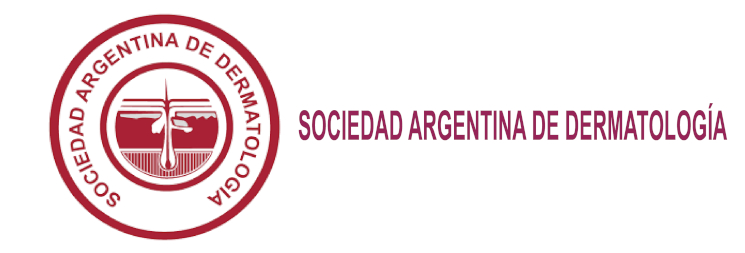Microbiota: un ecosistema inteligente
DOI:
https://doi.org/10.47196/da.v28i4.2310Palabras clave:
microbiota, microbioma, disbiosis, eje intestino-pielResumen
La microbiota es el conjunto de microorganismos que habitan en el cuerpo humano, ésta varía en cada individuo y es fundamental para el funcionamiento del sistema inmune y el mantenimiento de la salud. Está determinada por múltiples factores. Una alteración en la composición de la misma puede generar un efecto proinflamatorio que puede llevar al desarrollo de enfermedades sistémicas, entre ellas enfermedades cutáneas. El estudio de la microbiota parece ser un campo prometedor para entender la fisiopatología de muchas entidades y el uso de pro, pre y sinbióticos se encuentra aún en estudio y podría generar nuevas modalidades terapéuticas.
Citas
I. Morales MM, Rivas Calderón MK, García Romero MT. La revolución del microbioma y las enfermedades cutáneas. Artículo de revisión. DCMQ 2021;19:52-63.
II. Vaughn AR, Notay M, Clark AK, Sivamani RK. Skin-gut axis: The relationship between intestinal bacteria and skin health. [en línea] World J Dermatol. 2017;6:52-58 [Consultado agosto 2022].
III. Hou K, Wu ZX, Chen XY, Wang JQ, et ál. Microbiota in health and diseases. [en línea] Signal Transduct Target Ther. 2022;7:135 [Consultado agosto 2022].
IV. Balato A, Cacciapuoti S, Di Caprio R, Marasca C, et ál. Human Microbiome: Composition and Role in Inflammatory Skin Diseases. Arch Immunol Ther Exp. (Warsz) 2019:67;1-18.
V. Dei Cas I. Microbiota. Educándonos 2021;7:6-15.
VI. McLoughlin IJ, Wright EM, Tagg JR, Jain R, et ál. Skin Microbiome-The Next Frontier for Probiotic Intervention. Probiotics Antimicrob Proteins. 2022;14:630-647.
VII. Carmona-Cruz S. Orozco-Covarrubias L, Sáez-de-Ocariz M. The Human Skin Microbiome in Selected Cutaneous Diseases. [en línea] Front Cell Infect Microbiol. 2022;12:834135 [Consultado agosto 2022].
VIII. Casterline BW, Paller AS. Early development of the skin microbiome: Therapeutic opportunities. Pediatr Res. 2021;90:731-737.
IX. Mahmud R, Akter S, Tamanna SK, Mazumder L, et ál. Impact of gut microbiome on skin health: gut-skin axis observed through the lenses of therapeutics and skin diseases. [en línea] Gut Microbes. 2022;14: e2096995 [Consultado agosto 2022].
X. Daou H, Paradiso M. Hennessy K, Seminario-Vidal L. Rosacea and the Microbiome: A Systematic Review. Dermatol Ther (Heidelb). 2021;11:1-12.
XI. Merino Rivera JA, Taracena Pacheco S, Díaz Greene EJ, Rodríguez Weber FL. Microbiota intestinal: “el órgano olvidado”. Acta Med. 2021;19: 92-100.
XII. De Pessemier B, Grine L, Debaere M, Maes A, et ál. Gut–Skin Axis: Current Knowledge of the Interrelationship between Microbial Dysbiosis and Skin Conditions. [en línea] Microorganisms 2021;9:353 [Consultado agosto 2022].
XIII. Dei Cas I. Microbioma normal y disbiosis. Educándonos. 2021;7:16-18.
XIV. Farinati A. Microbioma compartimentalizado: relaciones y ejes importantes: intestinal, cutáneo, vaginal. Educándonos. 2021;7:28-36.
XV. Petersen C, Round JL. Defining dysbiosis and its influence on host immunity and disease. Cell Microbiol. 2014;16:1024-1033.
XVI. Brüssow H. Problems with the concept of gut microbiota dysbiosis. Microb Biotechnol. 2020;13:423-434.
XVII. Thursby E, Juge N. Introduction to the human gut microbiota. Biochem J. 2017;474:1823-1836.
XVIII. Mascardi MF. Métodos de estudio del microbioma. Educándonos. 2021;7:20-27.
XIX. Hill C, Guarner F, Reid G, Gibson GR, et ál. The International Scientific Association for Probiotics and Prebiotics consensus statement on the scope and appropriate use of the term probiotic. Nat Rev Gastroenterol Hepatol. 2014;11:506-514.
XX. Farinati A. Influencia de moléculas estresantes sobre el microbioma: Su uso en terapias no convencionales. Educándonos. 2021;7:82-84.
XXI. Olveira G, González-Molero I. Actualización de probióticos, prebióticos y simbióticos en nutrición clínica. Endocrinol Nutr. 2016;63:482-494.
Descargas
Publicado
Número
Sección
Licencia
Derechos de autor 2022 a nombre de los autores. Derechos de reproducción: Sociedad Argentina de Dermatología.

Esta obra está bajo una licencia internacional Creative Commons Atribución-NoComercial-SinDerivadas 4.0.
El/los autor/es tranfieren todos los derechos de autor del manuscrito arriba mencionado a Dermatología Argentina en el caso de que el trabajo sea publicado. El/los autor/es declaran que el artículo es original, que no infringe ningún derecho de propiedad intelectual u otros derechos de terceros, que no se encuentra bajo consideración de otra revista y que no ha sido previamente publicado.
Le solicitamos haga click aquí para imprimir, firmar y enviar por correo postal la transferencia de los derechos de autor













